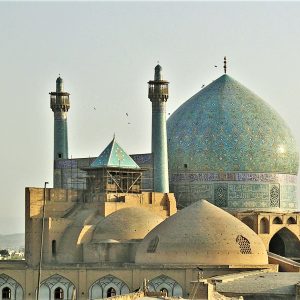Si-o-se Pol bridge along with its sister, the Khaju bridge in Isfahan both span the Zāyanderud, the largest river of the Iranian Plateau, in Isfahan, Iran. Si-o-Seh Pol or bridge of 33 arches was built during the rule of Shah Abbas the Great, it linked Isfahan with the Armenian suburb of Jolfa. It is by far the longest bridge in Isfahan at 295 m. Commissioned in 1602 by Shah Abbas I from his chancellor Allahverdi Khan Undiladze, it consists of two rows of 33 arches. There is a larger base plank at the start of the bridge where the Zayandeh River flows under it, supporting a tea house
For more than 300 years, these beautiful bridges have been the symbols of Isfahan, outstanding architectural landmarks and among the oldest and most beautiful bridges in the east.
Si-o-se Pol, or the Bridge of 33 Arches), also called the Allah-Verdi Khan Bridge, is one of the eleven bridges of Isfahan, Iran. It is highly ranked as being one of the most famous examples of Safavid bridge design.
The etymological root of Persian name for the river Zāyanderud is the Sanskrit word Jeevandehi – the giver of life.



